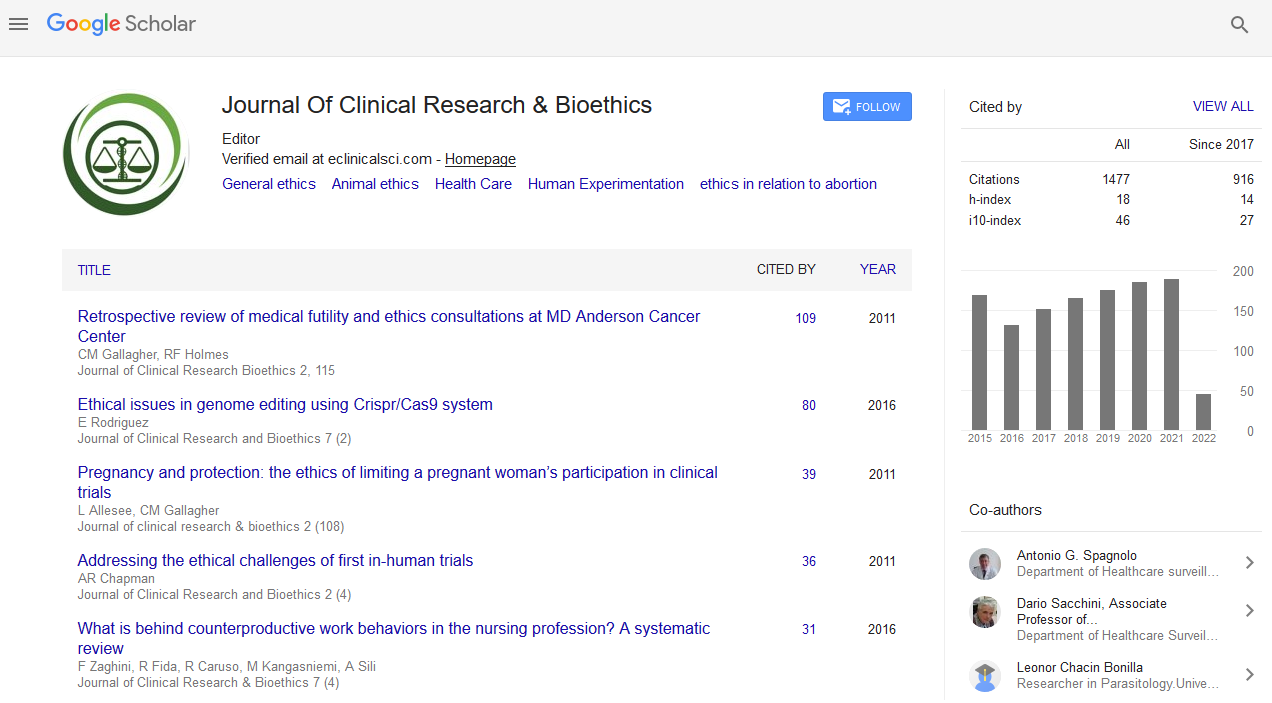PMC/PubMed Indexed Articles
Indexed In
- Open J Gate
- Genamics JournalSeek
- JournalTOCs
- RefSeek
- Hamdard University
- EBSCO A-Z
- OCLC- WorldCat
- Publons
- Geneva Foundation for Medical Education and Research
- Google Scholar
Useful Links
Share This Page
Journal Flyer

Open Access Journals
- Agri and Aquaculture
- Biochemistry
- Bioinformatics & Systems Biology
- Business & Management
- Chemistry
- Clinical Sciences
- Engineering
- Food & Nutrition
- General Science
- Genetics & Molecular Biology
- Immunology & Microbiology
- Medical Sciences
- Neuroscience & Psychology
- Nursing & Health Care
- Pharmaceutical Sciences
Abstract
Evaluating Effectiveness of Abstinence Message Response for HIV/Aids Prevention and Associated Factors among Hadiya Zone College Students using Extended Parallel Process Model, South Ethiopia
Background: Since its emergence HIV/AIDS killed millions of people and still its epidemics continued to grow. It became a major public health problem in nowadays. Recently, many advances have been made in developing effective and affordable interventions to reduce transmission of HIV, but desired level of turn down has not been attained. This study is aim to evaluate the Effectiveness of Abstinence Message Response for HIV/Aids prevention using EPPM among youths exposed to messages.
Methods: A cross sectional study was conducted using mixed methods of data collection on study participants selected using stratified simple random sampling from hosanna public college students. Data were analyzed using SPSS version 16.0. Logistic regression analysis was used to identify factors associated with message response. Results: Two hundred sixty nine (67.8%) of the respondents were found in danger control responses, whereas hundred twenty eight (32.2%) were found in fear control responses. Response efficacy [AOR (95%CI) =4.21(1.11, 11.32)] HIV/AIDS Rural residents [AOR (95%CI) = 3.13 (1.12, 7.32)] were positively associated factors for danger control responses whereas Perceived Self-efficacy [AOR (95% CI) = 0.68(0.61-0.76)], perceived susceptibility to [AOR (95%CI) = 0.22 (0.26, 0.69)] and perceived severity [AOR (95%CI) = 0.43 (0.11, 0.83)] of HIV/AIDS were negatively associated factors for danger control responses. Totally, 71.1% of the variance in the response of abstinence message could be explained by model.
Conclusion: Although higher numbers of respondents were in danger control psychological responses, there were gaps between critical values and most of the current behavior. Perceived susceptibility, severity, self-efficacy, response efficacy and previous residence were independent predictors towards ways of improving readiness to use recommended responses. Therefore, due attention should give to fill the gap of perception of risk both susceptibility and severity by inaugurating with self and response efficacies in the context of their residence.


